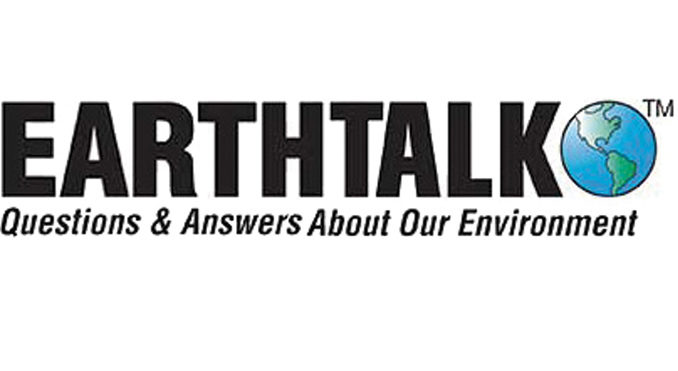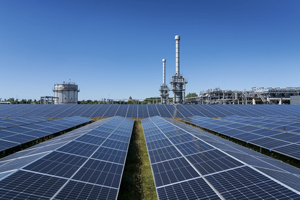
Dear EarthTalk: With colder weather on the way, what are some cheap and easy ways to winterize my house that will save energy? ~ Millie D., Sarasota, FL
If your home is cold and drafty in the winter, you owe it to yourself and your family to do something about it. And by making a few small upgrades—some of which you can do yourself — you’ll also save energy and money.
The first line of defense against the cold coming in is to check for drafts around windows, doors and any other openings. When you find drafts, seal them with weatherstripping or caulk. Place door sweeps or draft stoppers at the bottom of exterior doors to prevent cold air from seeping in. If you have single-pane windows, consider using window film or adding insulating window panels. Even heavy curtains can help.
Another important element of keeping your home warm and cozy in winter is insulation. The North American Insulation Manufacturers Association (NAIMA) estimates that some 90 percent of U.S. homes are under-insulated, wasting energy and money and decreasing our comfort.
“If all U.S. homes were fitted with insulation based on the 2012 International Energy Conservation Code (IECC),” says Boston University environmental health researcher Jonathan Levy, “residential electricity use nationwide would drop by about five percent and natural gas use by more than 10 percent,”

It’s hard to know how much insulation coats your house—and where it is in your walls and roof—if you didn’t build it. But certain telltale signs may mean you need more. If you feel drafts even through windows and doors that are well sealed, the cold air may be coming through the walls in spots where there is little or no insulation. Another sign of too little or inadequate insulation is when different rooms in the house are colder than others. Getting an inspection from a local reputable insulation installer is a great way to get started taking care of this common and easily fixed problem. While you’re at it, get a look at your roof to make sure you aren’t missing any roof tiles, which can also let cold air in and heated air out. If you can’t climb up there yourself easily, get a roofing contractor to give you a free inspection, and make sure they take pictures to back up their reporting to you.
Another way to boost the heat and efficiency of your heating system, whether you have an oil or gas burning furnace, electric baseboard or anything in between, is to get it serviced by a HVAC professional who can fine tune it and alert you to any problems in the system.
There are lots of other ways to warm things up in your home this winter without breaking the bank. If you have ceiling fans, switch them to the reverse (clockwise) direction to help circulate warm air that rises to the ceiling. If you don’t already have one, get a programmable thermostat and use it to lower the temperature when you’re not at home or overnight when you’re asleep.
CONTACTS: Fall and Winter Energy-Saving Tips, https://www.energy.gov/energysaver/fall-and-winter-energy-saving-tips, 11 Ways To Winterize Your Home On A Budget, https://www.bobvila.com/slideshow/11-ways-to-winterize-your-home-on-a-budget-10169.
_______________________________________________
Dear EarthTalk: What are we doing to promote and advance the kind of large-scale development of solar and other renewables needed to transition away from fossil fuels? ~ Jim M., Fairfield, CT
We may not have any time to waste in our effort to wean ourselves off fossil fuels. Getting the United States to a place where our electricity needs can be met by renewables is going to take concerted effort on the part of a multitude of public and private entities.

According to the trade group, Solar Energy Industries Association, utility scale solar projects are few and far between in the U.S. right now, but represents the fastest growing sector of the domestic energy market. SEIA reports that there are more than 37,000 megawatts (MW) of utility-scale solar projects currently up and running across the country, and another 112,000 MW are under development.
According to the energy research firm Woods Mackenzie, converting the entire U.S. power grid to 100 percent renewable energy over the next 10 years—just in time to possibly avert cataclysmic climate change—is technologically and logistically possible, but would cost something like $4.5 trillion. While that is a lot of money, how much money is too much when it comes to saving humanity and the rest of the living planet’s inhabitants?
And without some kind of vision or roadmap, there’s no way we can make the transition quickly enough to save ourselves. That’s why six large solar developers, land conservation and environmental groups, tribal entities, agricultural interests, community groups and investors came together in October 2023 to commit to furthering the build-out of large-scale solar infrastructure across the U.S. While it may seem like bad business for competitors to work together, the challenge is great enough that they all can benefit, especially if we can transition quickly. A rising tide lifts all boats.
This recent agreement reinforces efforts already underway at the local and regional levels across the country. The federal government’s National Renewable Energy Laboratory (NREL) has been working with large-scale farms from coast-to-coast in an effort to pair solar installations with agriculture—so called agrivoltaics—creating energy and providing space for crops, grazing and native habitats under and between photovoltaic panels. NREL is partnering with researchers at the University of Illinois at Urbana-Champaign to investigate how to optimize both crop production and the generation of renewable energy to maximize farm profitability while helping transition the nation away from fossil fuels.
Meanwhile, municipal, county and state governments across the U.S. are showing increased interest in implementing large-scale solar projects in their own locales. To this end, the American Planning Association recently published its free guidebook, Solar@Scale, designed to help local government practitioners—including planners, economic development professionals, local government managers and elected and appointed officials—make decisions that improve large-scale solar development outcomes that result in the creation of local jobs and power while boosting energy security and reducing communities’ carbon footprints.
CONTACTS: Solar Dialogue Agreement: https://woods.stanford.edu/research/solar-landconservation; Utility-Scale Solar, https://www.seia.org/initiatives/utility-scale-solar-power; Solar@Scale, https://www.planning.org/publications/document/9222548/; Agrivoltaics, https://www.nrel.gov/solar/market-research-analysis/agrivoltaics.html.
_______________________________________________
EarthTalk® is produced by Roddy Scheer & Doug Moss for the 501(c)3 nonprofit EarthTalk. See more at https://emagazine.com. To donate, visit https://earthtalk.org. Send questions to: question@earthtalk.org.

